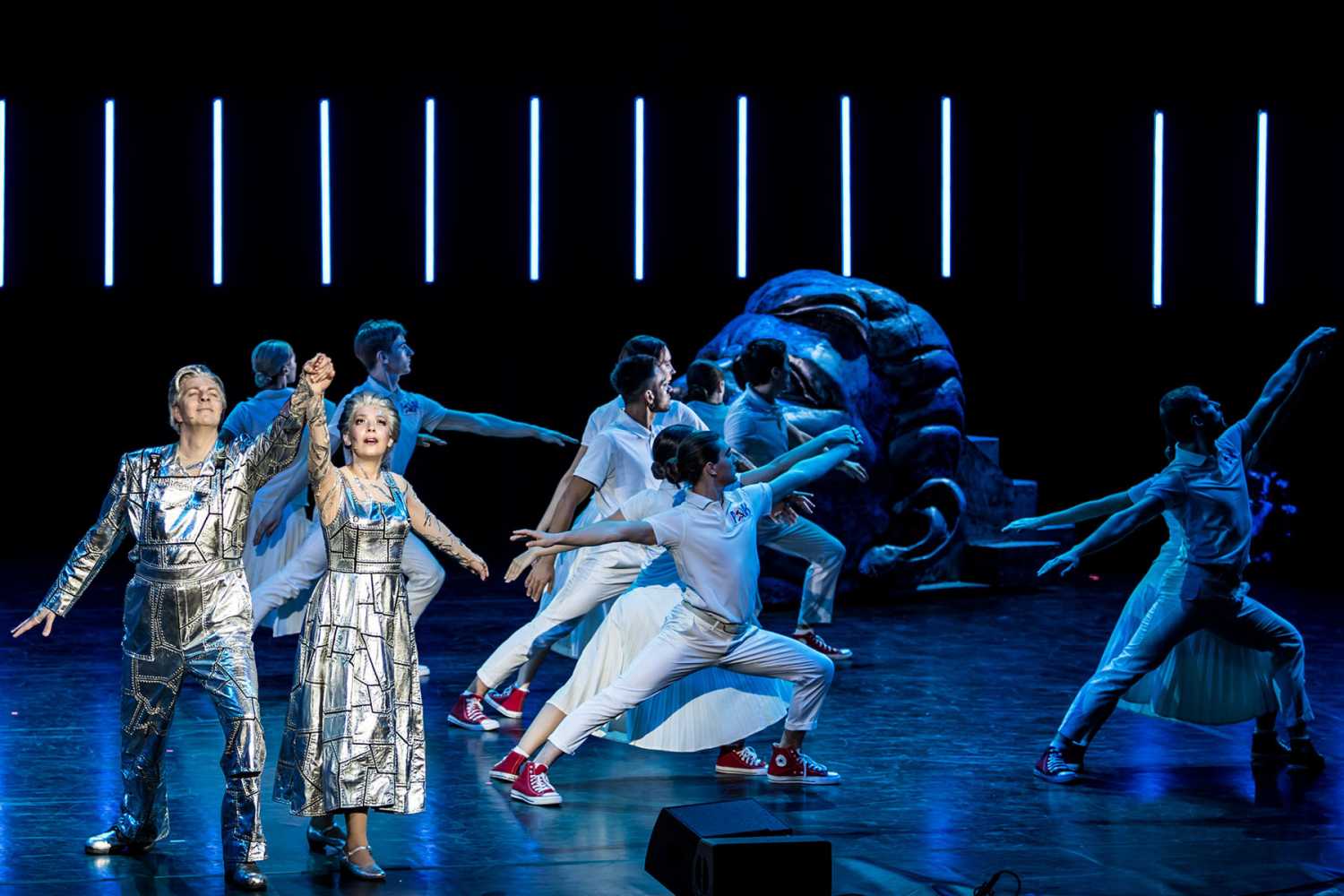Titans light The Worker & Kolkhoz Woman
- Details

The opera is dedicated to the history of one Russia’s most famous monuments, The Worker and Kolkhoz Woman, a 24.5m-high sculpture by Vera Mukhina, renowned globally as an example of socialist realism and art deco. Two figures - male and female - are leaning forward holding a hammer and sickle above their heads. The work was designed for the Soviet Pavilion at the 1937 World’s Fair in Paris and was subsequently moved to Moscow. It is instantly recognisable as a powerful Soviet-era symbol.
Last year marked the 130th anniversary of Vera Mukhina’s birthday and the 80th anniversary of the monument’s ‘home’ at the Exhibition of Achievements of the National Economy (VDNKh) in Moscow.
In the opera version, Worker and the Kolkhoz Woman come to life as two real workers who get packed up and sent to Paris for the Fair, where they reassume their poses and engage in a series of bizarre and surreal adventures and encounters - including with Marlene Dietrich and Pablo Picasso.
Lighting designer Alexander Krasnolutsky created a distinctive look and style for the show utilizing a conventional lighting rig, LED screens and the 60 Astera Titan Tubes that were a central element to the performance.
Alexander explained that he could not work with traditional beam lights as the Zaryadye Concert Hall itself has high ambient light levels and the use of haze is prohibited, so lighting designers cannot use popular techniques like beam technology.
However, contending with such challenging conditions plus the LED screens upstage, he saw nothing but new possibilities, which fired him up to take a different path in maximizing the scenic background created with the Titan Tubes.
“The Titans conveyed the mood of the moment as well as highlighting the images of specific characters throughout the opera," he explains.
The Titan Tubes were placed inside a black cabinet mounted about 2m off the floor which wrapped around the back and two sides of the stage in an arc.
The black cabinet provided maximum contrast and gave the impression the Tubes were floating in the air! Inside the cabinet, the Titan Tubes were fixed equidistant to each other, resulting in a broad strip of bright, colourful, symmetrically positioned vertical lines.
Alexander worked closely with video designer Ilya Shagalov to create overall moods and ambience as the different scenes unfolded. Ilya set the general tones while Alexander worked on lighting the many details in each scene and also on drawing in the audience and making the viewing experience more immersive.
“Using the Titan Tubes in this way solved several issues,” he explains. “The units are very bright and don’t get lost in the luminosity of the screens. They provide another layer and dimension of visuality.”
(Jim Evans)
















